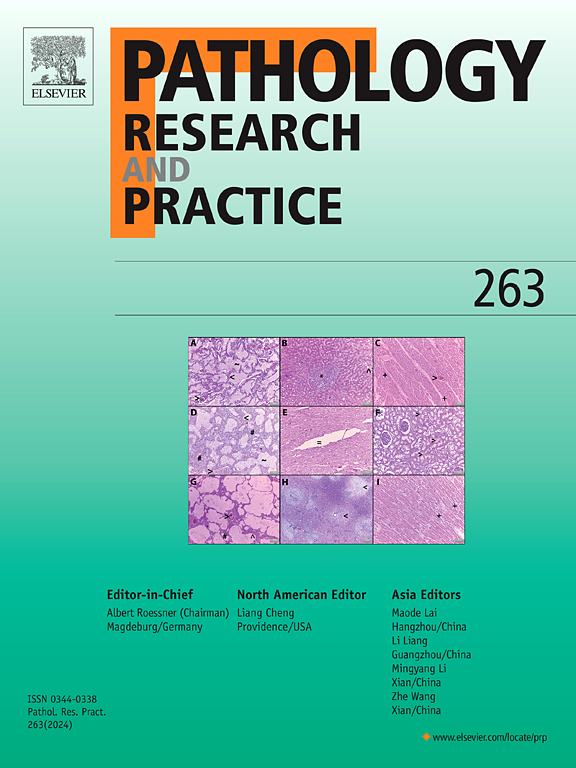INHBA, transcriptionally activated by SPI1, facilitates gastric cancer progression by inducing macrophage recruitment and M2 polarization via activating the TGF-β signaling to increase CCL2
IF 2.9
4区 医学
Q2 PATHOLOGY
引用次数: 0
Abstract
Tumor-associated macrophages (TAMs) are associated with the occurrence, development, and poor prognosis of human cancers. Inhibin beta A subunit (INHBA) is found to be aberrantly upregulated in gastric cancer (GC). However, whether INHBA is involved in macrophage recruitment and M2 polarization is unclear. Herein, INHBA expression was increased in GC tumor tissues and cells. INHBA expression was positively correlated with macrophage infiltration and M2 macrophage markers. Knockdown of INHBA in GC cells suppressed macrophage recruitment and M2 polarization by downregulaitng CCL2 expression and secretion. Mechanistic assays showed that SPI1 could bind to INHBA and transcriptionally activate its expression. SPI1 promoted macrophage recruitment and M2 polarization by upregulating INHBA expression. Moreover, SPI1 induced CCL2 expression by regulating INHBA in GC cells. INHBA upregulated CCL2 expression by activating the TGF-β signaling. Furthermore, SPI1-induced macrophages facilitated cell proliferation, migration, and invasion by increasing INHBA expression. INHBA-induced macrophages promoted cell proliferation, migration, and invasion by inducing CCL2 expression. Additionally, knockdown of INHBA inhibited tumor growth in vivo. In conclusion, SPI1 induces the macrophage recruitment and M2 polarization by transcriptionally regulating INHBA to activating the TGF-β signaling, thereby upregulating CCL2 expression and then contributing to GC cell malignant progression. Targeting SPI1/INHBA/CCL2 axis might be a promising therapeutic strategy for GC and potentially used for cancer immunotherapy.
求助全文
约1分钟内获得全文
求助全文
来源期刊
CiteScore
5.00
自引率
3.60%
发文量
405
审稿时长
24 days
期刊介绍:
Pathology, Research and Practice provides accessible coverage of the most recent developments across the entire field of pathology: Reviews focus on recent progress in pathology, while Comments look at interesting current problems and at hypotheses for future developments in pathology. Original Papers present novel findings on all aspects of general, anatomic and molecular pathology. Rapid Communications inform readers on preliminary findings that may be relevant for further studies and need to be communicated quickly. Teaching Cases look at new aspects or special diagnostic problems of diseases and at case reports relevant for the pathologist''s practice.

 求助内容:
求助内容: 应助结果提醒方式:
应助结果提醒方式:


